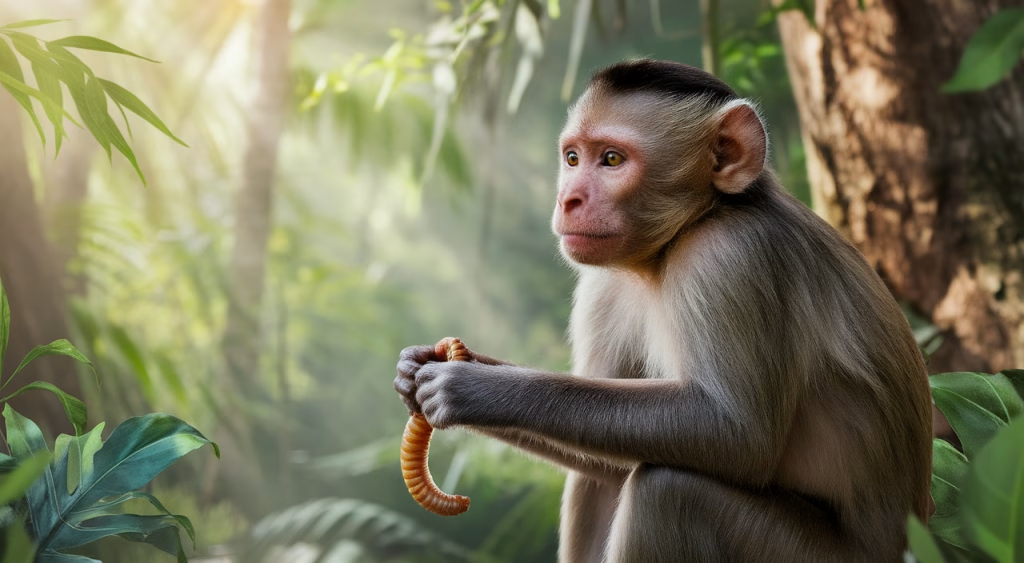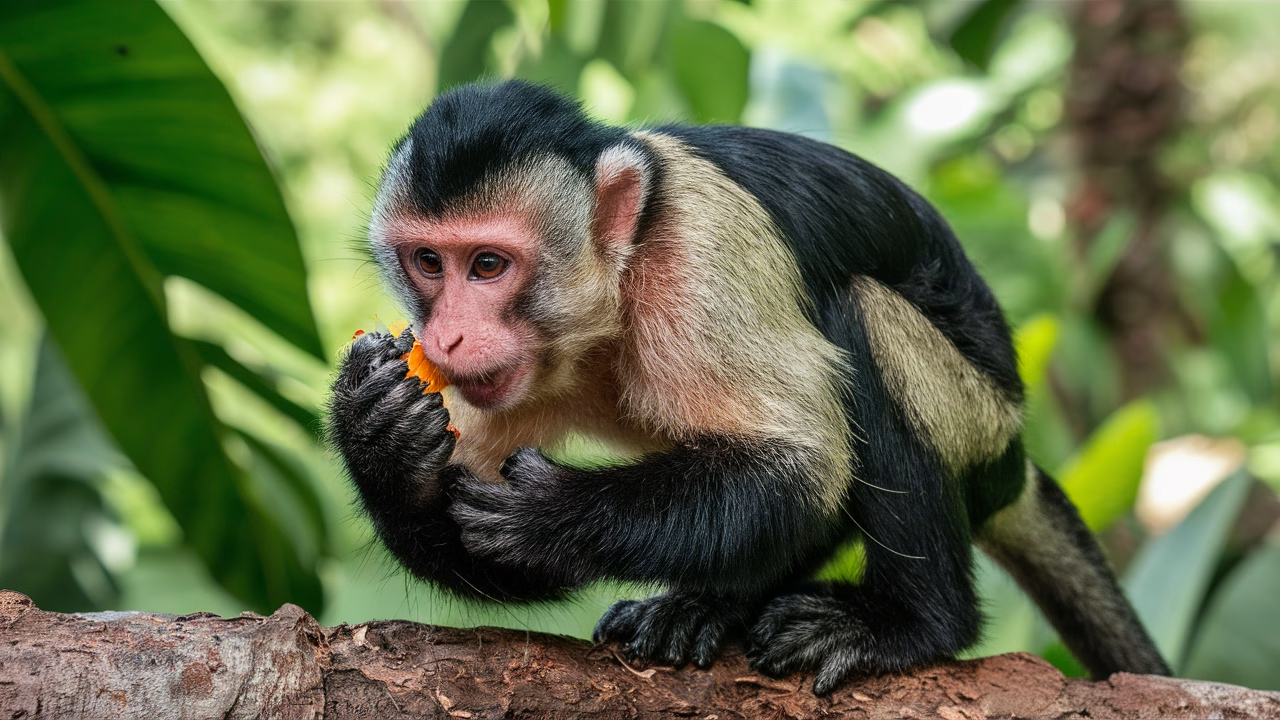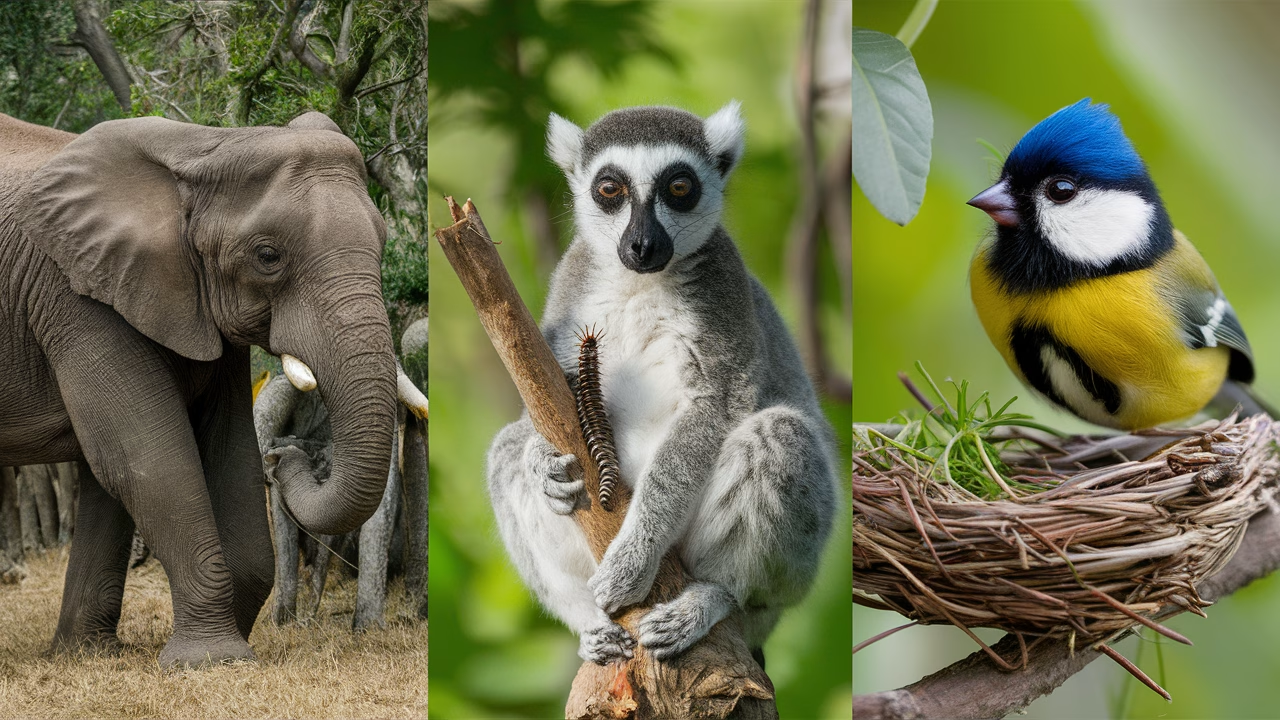Why do capuchin monkeys rub millipedes on themselves?
Capuchin monkeys rub millipedes on their fur as a natural defense mechanism against insects, particularly mosquitoes. The secret lies in the chemical compounds produced by the millipedes, which act as a highly effective, natural bug repellent. This behavior is both biological and social, showcasing the monkeys’ ability to adapt and learn from one another in their environment.
TL;DR: Capuchin Monkeys Use Millipedes as Natural Insect Repellent
- Natural Protection: Capuchins use chemicals secreted by millipedes as a potent mosquito deterrent.
- Social Behavior: This insect-repelling technique is learned and often performed during grooming or mating rituals.
- Chemical Mechanism: Millipedes release benzoquinones and other compounds known to repel and kill insects.
- Environmentally Smart: An ingenious example of nature’s pharmacy—no synthetic chemicals needed.
- Evolutionary Insight: Highlights the cognitive abilities and cultural learning in primates.
Capuchin Monkeys and Their Use of Millipedes
How Capuchin Monkeys Utilize Millipedes
When you observe a capuchin monkey pluck a millipede from the forest floor, you’re witnessing nature’s most sophisticated pest control strategy. The monkey bites the millipede gently to trigger the release of chemical compounds, chews it slightly, and then methodically rubs it over its body. This capuchin monkey millipede behavior might look like play, but it’s actually a remarkable form of self-medication—a chemical warfare strategy passed down through generations.
This millipede-rubbing behavior isn’t random. It commonly occurs during the wet season when mosquito populations peak. The behavior spreads socially—young capuchin monkeys watch elders and mimic their actions, learning this natural bug repellent technique. It’s like the troop shares an ancient recipe for repelling insects, with the main ingredient walking on a hundred legs.
The Science Behind the Insect-Repellent Properties
Millipedes from the order Diplopoda release defensive chemicals when disturbed. Among the most potent are benzoquinones—compounds known for their toxicity to insects. When capuchin monkeys crush and smear these millipedes over their fur, they create a natural insect repellent barrier that effectively deters mosquitoes.
These chemicals work by masking the monkey’s natural body scent and disrupting the sensory cues mosquitoes use to locate hosts. Some compounds even kill small insects or prevent them from biting successfully. This natural mosquito deterrent acts like a biological form of DEET, perfected through millions of years of evolution.
Benefits of Using Natural Bug Repellents
Environmental and Health Benefits
The capuchin monkeys millipedes interaction offers us more than academic curiosity—it presents a model for sustainable pest control. Unlike artificial sprays and repellents, this natural approach is self-regenerating and biodegradable. Capuchin monkeys avoid the skin irritants and harmful neurotoxins commonly found in synthetic repellents humans use.
This method demonstrates a deep interspecies relationship—chemical cooperation where one creature’s defense mechanism serves another’s survival strategy. We could learn from such harmonious cohabitation in our own pest management approaches.
Ethical Considerations of Animal Behavior
When we study these behaviors, it’s crucial to interpret them with respect for the species involved. While we must avoid anthropomorphizing, we should marvel at how complex practices evolve through imitation, memory, and observation—like traditional knowledge passed across generations.
The real insight isn’t just about avoiding mosquito bites—it’s understanding animal cultures. These capuchin monkeys aren’t simply reacting; they’re choosing, learning, and teaching sophisticated natural bug repellent strategies.
Understanding Capuchin Monkey Behavior
Social Aspects of the Millipede-Rubbing Behavior
In capuchin societies, grooming serves multiple purposes—hygiene, social bonding, and hierarchy establishment. The same applies to their millipede use. Capuchin monkeys often share chewed millipedes among group members, applying this natural insect repellent to one another. This behavior frequently occurs during mating seasons, suggesting multiple evolutionary purposes: protection and possibly attraction.
This represents social learning—behavioral transmission through direct interaction rather than genetic inheritance. Few species exhibit this kind of cultural knowledge transfer, making capuchin monkey millipede behavior particularly remarkable among primates.
Learning From Animal Instincts
What can we learn from these intelligent primates? Nature has perfected biodynamic solutions to real-world problems long before human innovation. From termite mounds inspiring ventilation systems to bee societies improving data structures, animals continue teaching us. Capuchin monkeys millipedes usage shows us that non-verbal species innovate, adapt, and share knowledge about natural bug repellent methods.
Similar Natural Repellent Strategies in the Animal Kingdom
Other Animal Species Utilizing Natural Bug Repellents
Capuchin monkeys aren’t alone in using natural insect repellent strategies. African elephants crush herbs and bark to ward off flies, while Madagascar lemurs rub toxic centipedes on their bodies in scenes similar to capuchin monkey millipede behavior.
Birds like blue tits incorporate aromatic herbs—lavender and mint—into their nests to keep parasites away. These examples reveal that using nature’s pharmacy as a mosquito deterrent is far more common than we realize across different species.
Evolutionary Perspectives on Insect-Repellent Behaviors
Natural bug repellent behaviors like millipede-rubbing likely evolved through selective pressures—individuals more resistant to biting insects achieved higher survival and reproduction rates. Actions tied to environmental cues eventually became learned toolkits passed between generations.
What makes capuchin monkey millipede behavior extraordinary is its learned rather than purely instinctive nature, suggesting strong cognitive function. These monkeys don’t just react to discomfort—they prevent it using natural insect repellent methods. That’s foresight representing a significant cognitive leap in animal intelligence.
Conservation and Ethical Implications
Encouraging Sustainable Practices
Studying capuchin monkey millipede behavior provides more than scientific fascination—it offers innovation opportunities. Can we develop natural bug repellent products inspired by millipede secretions? Could monitoring primate use of arthropod resources alert us to ecosystem changes?
Responsible study and emulation of these natural mosquito deterrent methods can lead to sustainable alternatives, especially benefiting rural or forest-dependent communities seeking eco-friendly pest control.
Respecting Nature’s Solutions
We must approach these studies respectfully. These animals are teachers, not laboratories. As we learn from capuchin monkeys millipedes interactions, we must safeguard their habitats and behaviors. Their cultures, like ours, deserve preservation—both physically and behaviorally.
Frequently Asked Questions
- Do capuchin monkeys eat the millipedes?
Not usually. They bite them lightly to release chemicals but do not consume them due to toxicity. - Are the millipedes harmed?
Often yes, the millipedes may die or become incapacitated, but their presence in numbers maintains the cycle. - Can humans use millipedes the same way?
No. Many millipedes release toxins that can irritate human skin or be hazardous in large amounts. - Is this behavior seen in all capuchin populations?
Not all. It’s most commonly observed in white-faced and tufted capuchin species in certain geographical locations. - Do other primates do this?
Similar behaviors are rare but have been noted in orangutans and some lemur species using insects or plants. - Can this knowledge help us create better repellents?
Possibly—studying benzoquinones in these millipedes might inspire safer, biodegradable repellents.
Final Thought
Capuchin monkeys offer us more than forest entertainment and curious behaviors. They provide a window into nature’s wisdom—where the solution to pesky mosquitoes isn’t found in a laboratory, but in a multi-legged creature crawling among forest leaves. Through observing capuchin monkey millipede behavior, we discover that living harmoniously with our environment doesn’t always require new inventions—sometimes it just needs learning from nature’s existing natural bug repellent solutions.





